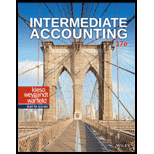
Long-term debt: A debt payable by the company for more than a period of 12 months or 1 year is termed as long-term debt. It is a form of company’s loan and other liabilities. Every company must disclose long-term debts on their
(a)
To discuss: To discuss the sources of long-term debt.
Explanation of Solution
Justification: The corporation acquires or raises funds through long-term debt from different sources, like:
- Issuance of bonds.
- Mortgages.
- Bonds.
- Long-term notes.
Thus, the sources from where a corporation acquires funds by means of long-term debts are listed in the solution.
(b)
To discuss: To discuss the meaning of bond indenture and elements contained in the bond indenture.
Explanation of Solution
Justification: Bond’s indenture is a legally enforceable contract between the bond issuer and bondholder. The issuer of bonds signs this form of agreement. This contract enforces obligations that must be performed by the bond issuer to the bondholder.
Bond indenture contains certain restrictive covenants mainly for the protection of the bondholders. It includes restriction on the payment of dividend, restriction on future borrowings, and restriction on behalf of maintaining the minimum level of
Thus, the given terms are explained.
(c)
To discuss: To discuss the meaning of mortgages.
Explanation of Solution
Justification: Mortgages are important debt instrument of a company. A mortgage is a document that is stated on the security of a loan. It even clearly specifies the rights of the mortgagee under default of repayment of the debt or loan. As a result, the borrower is obliged to repay with the set of predetermined payments.
Thus, the given terms are explained.
Want to see more full solutions like this?
Chapter 14 Solutions
Intermediate Accounting, 17th Edition
- I am searching for the accurate solution to this general accounting problem with the right approach.arrow_forwardI am searching for the correct answer to this general accounting problem with proper accounting rules.arrow_forwardPlease provide the correct answer to this general accounting problem using valid calculations.arrow_forward
- Under absorption costing the ending inventory for the year would be valued at:arrow_forwardI am searching for the accurate solution to this financial accounting problem with the right approach.arrow_forwardPlease explain the solution to this financial accounting problem with accurate principles.arrow_forward
- Can you solve this general accounting problem using appropriate accounting principles?arrow_forwardPlease provide the correct answer to this financial accounting problem using valid calculations.arrow_forwardA company identifies two activities: material handling and machine setup. The cost drivers are number of parts (10,000) and number of setups (200), with cost pools of $250,000 and $180,000 respectively. Product A uses 2,500 parts and 50 setups. Calculate the activity-based overhead allocated to Product A.arrow_forward

 AccountingAccountingISBN:9781337272094Author:WARREN, Carl S., Reeve, James M., Duchac, Jonathan E.Publisher:Cengage Learning,
AccountingAccountingISBN:9781337272094Author:WARREN, Carl S., Reeve, James M., Duchac, Jonathan E.Publisher:Cengage Learning, Accounting Information SystemsAccountingISBN:9781337619202Author:Hall, James A.Publisher:Cengage Learning,
Accounting Information SystemsAccountingISBN:9781337619202Author:Hall, James A.Publisher:Cengage Learning, Horngren's Cost Accounting: A Managerial Emphasis...AccountingISBN:9780134475585Author:Srikant M. Datar, Madhav V. RajanPublisher:PEARSON
Horngren's Cost Accounting: A Managerial Emphasis...AccountingISBN:9780134475585Author:Srikant M. Datar, Madhav V. RajanPublisher:PEARSON Intermediate AccountingAccountingISBN:9781259722660Author:J. David Spiceland, Mark W. Nelson, Wayne M ThomasPublisher:McGraw-Hill Education
Intermediate AccountingAccountingISBN:9781259722660Author:J. David Spiceland, Mark W. Nelson, Wayne M ThomasPublisher:McGraw-Hill Education Financial and Managerial AccountingAccountingISBN:9781259726705Author:John J Wild, Ken W. Shaw, Barbara Chiappetta Fundamental Accounting PrinciplesPublisher:McGraw-Hill Education
Financial and Managerial AccountingAccountingISBN:9781259726705Author:John J Wild, Ken W. Shaw, Barbara Chiappetta Fundamental Accounting PrinciplesPublisher:McGraw-Hill Education





